Our Virtual Potluck: Part III

The table is set, the buffet dishes are in place, the napkins are neatly folded, the kitties are on their best behavior. It’s time for the Manitou Winds Virtual Potluck!
The table is filling up… it’s already starting to smell great in here. Did you grab yourself a cup of tea or cocoa? Keep that orange cat away from Sam’s lasagna!
I’m Jason, by the way: Manitou Winds’ oboist, pianist, and harpist. Nice to meet you!
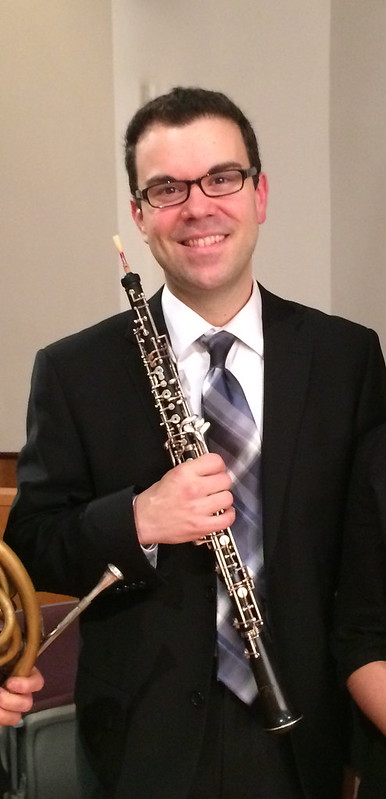 Yes! It’s cold outside! I was born and raised in South Louisiana, but I’ve lived in the Midwest since 2005. Winter here in Northern Michigan always takes me a bit by surprise — every year it’s different! But, I can’t deny that I love it. My husband and I try to get out into the snow and cold as much as possible — snowshoeing and hiking, mainly. The cloud cover starts to wear on me a bit by March, but that’s usually when we take a little trip to Louisiana to visit my family and see the azaleas and wisteria in full bloom.
Yes! It’s cold outside! I was born and raised in South Louisiana, but I’ve lived in the Midwest since 2005. Winter here in Northern Michigan always takes me a bit by surprise — every year it’s different! But, I can’t deny that I love it. My husband and I try to get out into the snow and cold as much as possible — snowshoeing and hiking, mainly. The cloud cover starts to wear on me a bit by March, but that’s usually when we take a little trip to Louisiana to visit my family and see the azaleas and wisteria in full bloom.
I’ve noticed winter is typically when I find time to get most of the arranging and composing done for Manitou Winds. With evening coming so quickly this time of year, I brew a cup of coffee or tea and head to the piano bench to plan the coming year’s musical adventures. Right now, in fact, I’m working on the 2016 Winter Songs & Carols program. It is a  little strange to be thinking about the holidays in January and February, but the cold helps! I really have to seize the day before I get too busy with other things.
little strange to be thinking about the holidays in January and February, but the cold helps! I really have to seize the day before I get too busy with other things.
Other than music, I spend a lot of spare time planning and working in a fairly large web of gardens that I sketched out and began with James. Of course, we’re not done creating the gardens, but these things take time — and work! For the vegetable garden, we start most of the seedlings ourselves usually around February, and then things just get busier from there as the weeding, watering, and planting sessions get longer and more frequent into June. It’s a lot of work, but I enjoy the exercise and the excuse to be outdoors. I do get an inordinate amount of pleasure from growing and gathering a lot of our own 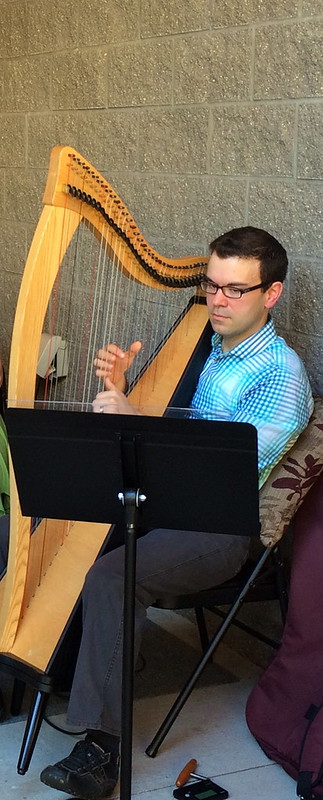 food — and preserving it. Yep, we can stuff! Jams, pickles, tomato sauces… it’s a little strange how much I enjoy filling up the pantry.
food — and preserving it. Yep, we can stuff! Jams, pickles, tomato sauces… it’s a little strange how much I enjoy filling up the pantry.
Before I picked the oboe back up and Manitou Winds was just this faraway idea in my head, I usually spent all of winter working on patchwork quilting and learning to speak Gaeilge (Irish… but that’s an ongoing story for another time). The garden usually kept me too busy to do much on my quilting projects or Rosetta Stone during spring and summer, but after all the canning started dying down in autumn, I’d pick things back up and usually finish a quilting project or two and master a few new units and verbs.
These days, I find the oboe is a very demanding presence. Keeping up with reeds, music, and ensembles has pretty much shoved quilting to the back burner. If I had more time, I think I’d still be quilting. It was tedious work, at times, but I really enjoyed the overall  process. Stepping away from the fabric was a compromise in a lot of ways, but as long as I’m learning and enjoying what I’m doing it’s worth it.
process. Stepping away from the fabric was a compromise in a lot of ways, but as long as I’m learning and enjoying what I’m doing it’s worth it.
I always said quilting reminded me of drawing or painting — two things I was never any good at. Working with all the little patches of fabric was my way of “painting”. If I’m honest, composing and arranging for Manitou Winds pretty much reminds me of quilting. There’s the tedium of the minute details within each measure and the process of actually getting these notes onto paper. Then, there’s the edits and rewrites when something isn’t quite what I wanted it to be, and the excitement that grows as the pieces gradually come together. And finally, there’s that moment when you can step back and see/hear the whole picture.
I still get nervous about premiering pieces — performing in general. But my nervousness is always overshadowed by the joy I feel in getting to share this music with the musicians (my friends) and eventually our audience. Keeping it all to yourself just wouldn’t be satisfying at all.
The same thing goes for food! Today I made two Irish-themed recipes to share at the potluck…
___________________________________________________________
Shepherd’s Pie
Serves 4-6
One of my all-time favorite comfort foods! I prefer to leave the potato skins on (for color and fiber), but peeling them is okay too. To adjust the consistency and amount of the sauce, just adjust the amount of stock you add. There’s only enough cheese here to add flavor so be sure to use a sharp cheese.
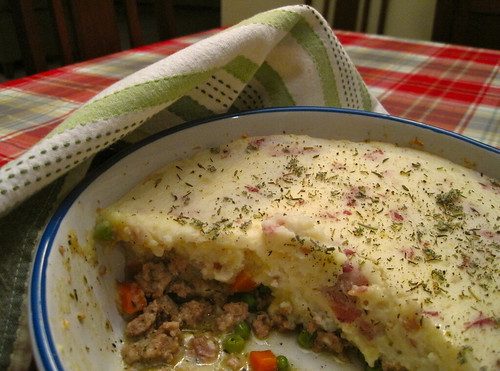 1 1/2 pounds red potatoes
1 1/2 pounds red potatoes
2 tablespoons unsalted butter
1/2 cup low fat sour cream
Salt and freshly ground black pepper
1 pound lean ground meat (beef, pork, lamb, or turkey)
1/2 teaspoon dried rosemary
1 teaspoon dried thyme
1/2 teaspoon dried sage
1 1/3 tablespoons all-purpose flour
1 cup low-sodium beef or chicken stock (approximately, see above)
1/2 cup diced carrots
1/2 cup green peas
2 1/2 ounces Dubliner or sharp white cheddar cheese, shredded
Preheat oven to 350-degrees.
Wash potatoes and cut into 1″ cubes (unpeeled). Boil in salted water until fork tender; drain and return to pot. Add butter and mash into potatoes until nearly smooth. Add sour cream and mix thoroughly; add salt and pepper to taste. Cover and set aside.
In a medium skillet over medium-high heat, brown and crumble the ground meat seasoning with salt and pepper to taste; gradually add the rosemary, thyme, and sage. Sprinkle the flour over the mixture, stirring to incorporate; cook for 1 minute. Gradually add to the skillet approximately 1 cup of stock while stirring (the stock you add will determine how saucy  the “filling” of the pie will be); bring to a full simmer. Stir in diced carrots and peas and return to a simmer; cover and cook, stirring occasionally, for approximately 12 minutes or until carrots are fork tender and sauce has thickened. Season to taste with salt and pepper.
the “filling” of the pie will be); bring to a full simmer. Stir in diced carrots and peas and return to a simmer; cover and cook, stirring occasionally, for approximately 12 minutes or until carrots are fork tender and sauce has thickened. Season to taste with salt and pepper.
Pour the meat mixture into a 2-quart (preferably round) casserole dish. Top with cheese to make a thin layer. Spoon the mashed potato mixture atop the cheese and then spread evenly to completely cover; sprinkle with additional dried herbs and pepper, if desired. Bake for 20-30 minutes or until mixture is bubbly on bottom and potatoes are beginning to brown slightly on the edges. Allow to cool 5-10 minutes before serving.
___________________________________________________________
County Cavan Brown Bread
Yields 1 loaf (app. 12 slices)
I adapted this recipe from an authentic Irish cookbook. It’s the easiest and tastiest homemade bread you can bake — wholesome with oats and honey. Leftovers are excellent toasted and lightly buttered and served with breakfast or tea.
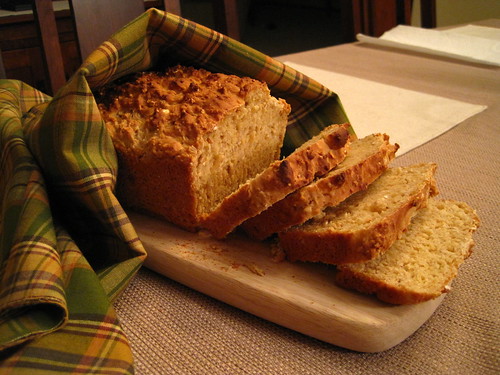 1 1/2 cups all-purpose flour
1 1/2 cups all-purpose flour
1 cup whole wheat pastry flour or white whole wheat flour
1/2 cup quick oats
1/4 cup steel-cut oats
1 teaspoon Kosher salt
1 teaspoon baking soda
1/4 teaspoon baking powder
2 1/2 tablespoons honey
1 1/2 cups buttermilk
Preheat oven to 400-degrees. Lightly oil or butter an 8×4-inch loaf pan.
In a large bowl, combine the all-purpose flour, whole wheat pastry flour, quick oats, steel-cut oats, salt, baking soda, and baking powder; whisk together until uniformly combined.
In a medium bowl, add the honey and gradually stir in the buttermilk to dissolve the honey. Make a well in the middle of the flour mixture, pour the milk mixture into the flour mixture; mix just until thoroughly combined. Spoon batter into prepared loaf pan.
Bake at 400-degrees for 35-40 minutes or until loaf top is a dark golden-brown. Allow to cool in pan on wire rack for 10 minutes before turning out onto rack to cool.
___________________________________________________________
Looking for more recipes? Check out the other recent Woodwind Gourmet series:
Series I: Oboes, Oranges & Almonds
Series III: Notable Breakfasts
Series IV: Our Virtual Potluck

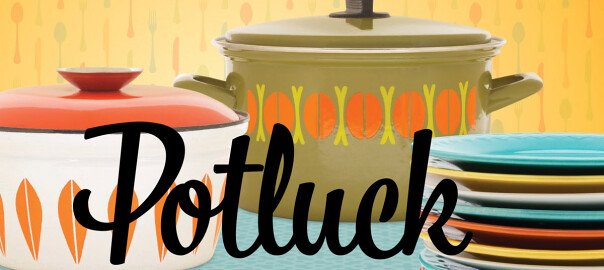
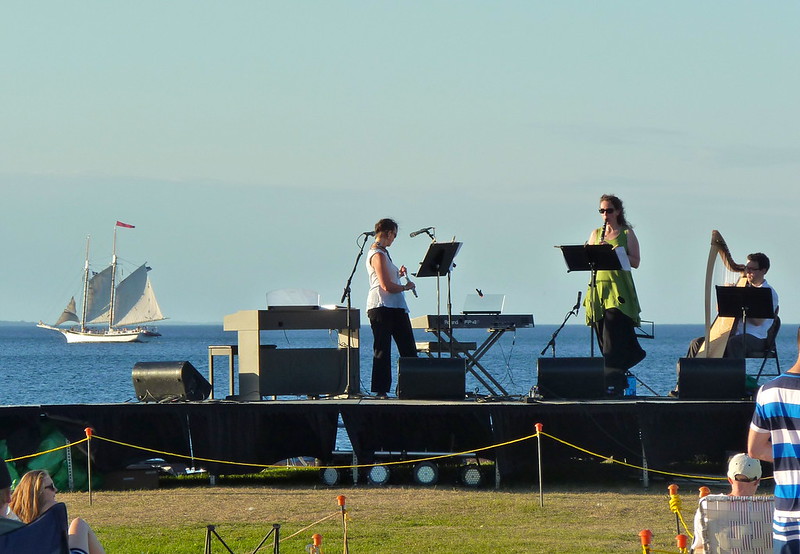
I’ve had both and they are very tasty 🙂
Thanks, mom!
I’ll be there for dinner shortly. 🙂